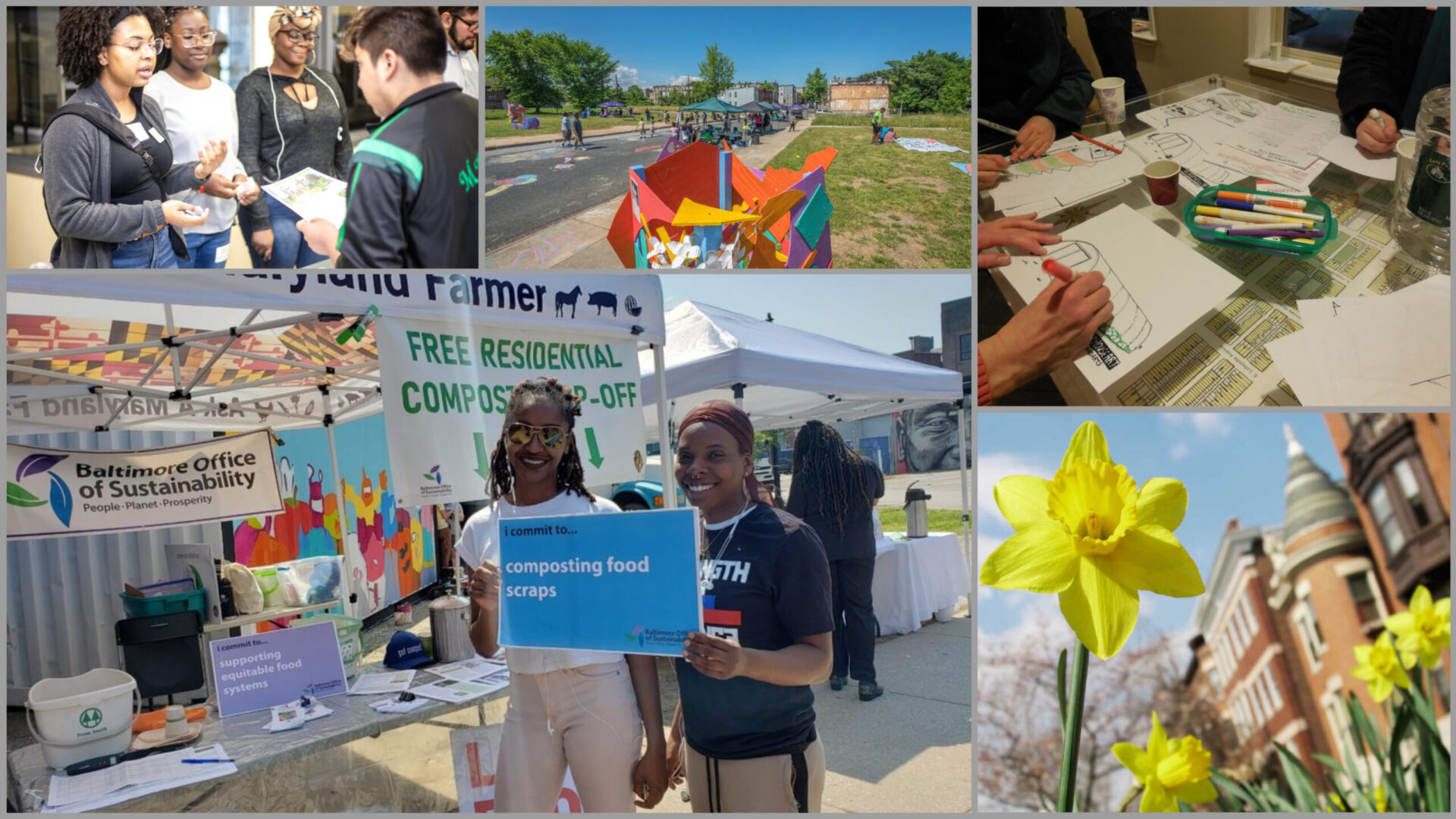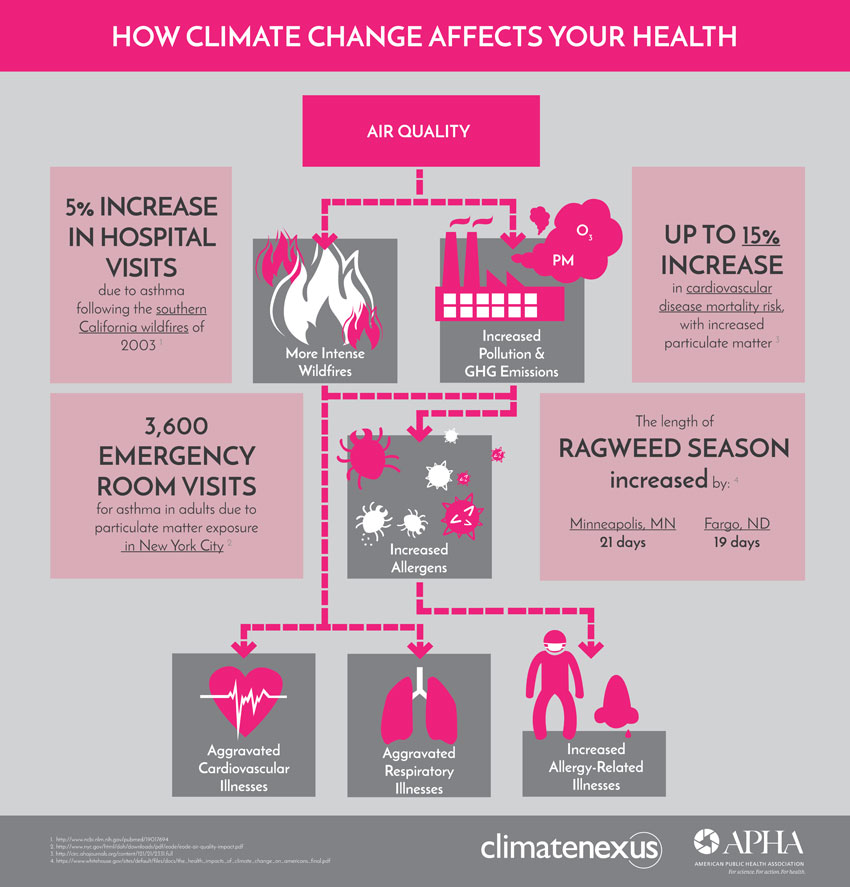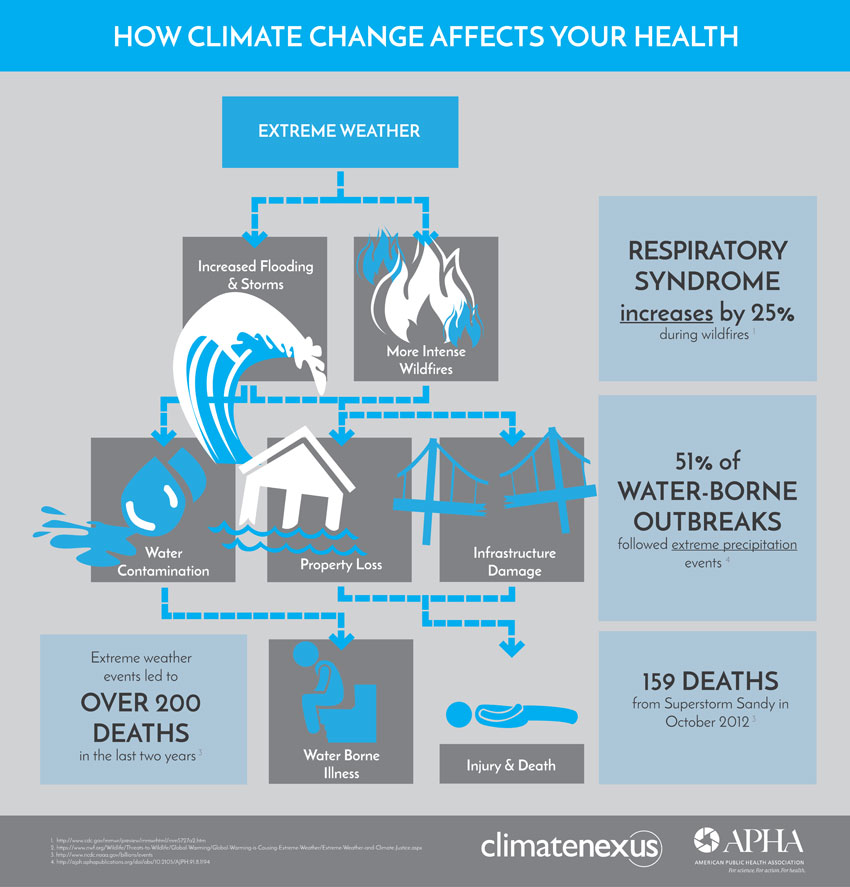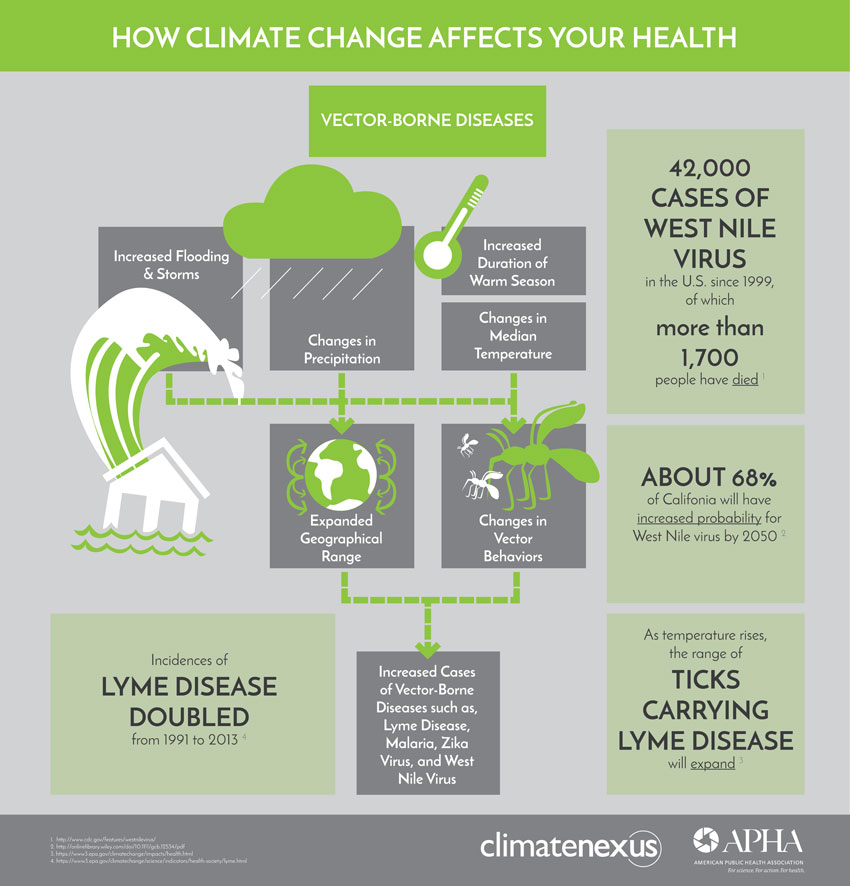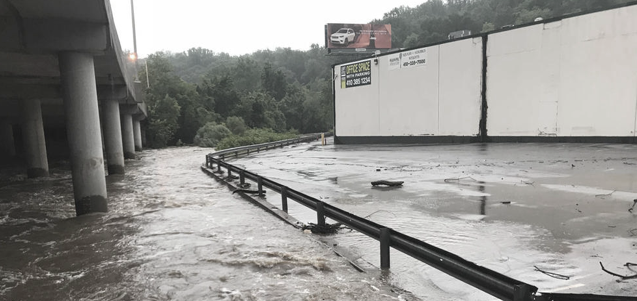
Climate change related disaters already affect people, businesses and infrastructure in Baltimore. In response to current and increasing future risk, Baltimore created a progressive climate adapation and hazard mitigation plan to help guide our daily activities so they reflect a commitment shared by government, business, and citizens to reduce or eliminate impacts from current and future natural hazards.
Read the 2023 DP3 (plan and attachments).
To get in touch with the project team, please contact:
Valerie Rupp at valerie.rupp@baltimorecity.gov
Background
Baltimore’s Disaster Preparedness and Planning Project (DP3) is Baltimore's combined hazard mitigation plan and climate adaptation plan. It's purpose is to minimize impacts and damage to people, property, the environment, and the economy.
In addition to guiding City work to keep everyone who lives, works, plays, learns and grows safe, as well as the businesses and infrastructure that help us thrive, the DP3 fulfills Federal Emergency Management Agency (FEMA) requirements to update the city's Hazard Mitigation Plan every 5 years to maintain eligibility for certain pre-disaster mitigation and post-disaster recovery funds. This funding, in addition to other funding sources, supports the implementation of the long-term mitigation strategy developed during the DP3’s planning process.
Most recently updated in November 2023, the DP3 details the City's strategy to locally address both existing hazards and future hazards due to intensifying climate change impacts. Risk is determined by quantifying hazard impacts on community assets, such as the population, built and natural environments, and the economy.
Identified Hazards
In order to determine the appropriate strategies and actions for climate adaptation and hazard mitigation, natural hazards which threaten the City had to be identified. In Baltimore, the following hazards pose a threat:
- Flooding
- Coastal Hazards—Hurricanes, Sea Level Rise, Storm Surge, Coastal Inundation
- Precipitation Variability—Precipitation, Winter Storms, Drought, Dam Failure
- Extreme Wind
- Extreme Heat
- Air Quality
Goals and Objectives
- Protect the health, safety, and welfare of Baltimore City residents and visitors
- Prevent damage to structures, infrastructure, and critical facilities
- Build resilience and disaster prevention and planning into all programs, policies and infrastructure
- Enhance the City of Baltimore's adaptive capacity and build institutional structures that can cope with future conditions that are beyond past experience
- Promote hazard mitigation and climate adaptation awareness and education throughout the city of Baltimore
- Become an even higher rated Community Rating System (CRS) classified community
Strategy Areas
The following categories demonstrate how the hazard mitigation strategies and actions were structured in the plan. These strategies and actions can be found in Chapter 5 of the 2018 DP3 as well as Appendix 5-1:
Infrastructure
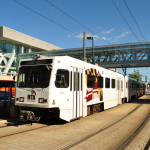 Maintaining the quality and necessary capacity of the built public infrastructure that services our daily needs will ensure public safety and economic security. DP3 includes strategies to protect our energy, wastewater, drinking water, and transportation infrastructure, among others.
Maintaining the quality and necessary capacity of the built public infrastructure that services our daily needs will ensure public safety and economic security. DP3 includes strategies to protect our energy, wastewater, drinking water, and transportation infrastructure, among others.
Buildings

Baltimore has a diverse and extensive collection of buildings in the city, many of which have historical significance. These structures are vulnerable to damage from hazards. Strategies within DP3 improve building design and code to protect against hazards and improve resource conservation.
Natural Systems

Natural systems have the potential to be utilized as a mitigation strategy against climate change. DP3 strategies outline utilization of green corridors, preservation of shoreline areas, as well as water supply management tactics
Public Services
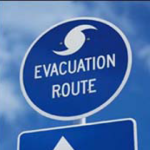
Disaster preparedness and distribution of resources, information, and response plans is key to ensuring public safety and mitigating tragic consequences associated with hazards. DP3 creates coordinated planning and communication efforts, as well as education and outreach.
Methodology
The 2018 DP3 was created using the following process throughout plan development:
- Identification of existing hazards
- Inventory analysis to identify all assets and critical facilities such as hospitals, schools, etc.
- Risk modeling to assess threats from existing hazards and predicted climate impacts
- Vulnerability assessment of identified assets and critical facilities relative to each hazard; identification of exposure, sensitivity and adaptive capacity
- Development of strategies and actions to mitigate existing hazards and reduce predicted impacts
- Development of implementation plans for these actions, as well as recommendations for stakeholder involvement and funding strategies
Community Involvement in the 2023 DP3 Update Process
During this planning project, the City, local leaders, and community members worked in tandem to identify risks, assess capabilities, and formulate a strategy to reduce disaster vulnerability. This included active participation from a 50+ member Hazard Mitigation Advisory Committee as well as a 15-member Equity Subcommittee.
Public and Stakeholder Participation
Public and stakeholder participation and feedback were vital to the DP3’s planning process. After extensive community engagement and technical analysis, the Draft 2023 DP3 was open for public comment from August 11 through September 11th. After incorporating public comments as well as State review feedback throughout the month of September, the plan was submitted to FEMA on October 2nd for their review. FEMA reviewed the plan in accordance with their requirements and best practices throughout their 45-day review period and sent feedback to the City on November 10th, which are being incorporated to create the Final 2023 DP3.
The final version of the 2023 DP3 was adopted by the Sustainability Commission on Wednesday, November 29th, and the Planning Commission on Thursday, November 30th at their respective public meetings.
To get in touch with the project team, please contact:
Valerie Rupp at valerie.rupp@baltimorecity.gov
Full-Text Plans
2023 DP3 (adopted in November 2023)
2018 DP3 (adopted December 2018):
2018 DP3 Update
Appendix 1-1 Advisory Meetings
Appendix 1-2 Team Meetings
Appendix 1-3 Community Outreach
Appendix 1-4 Public Survey Summary
Appendix 1-5 Public and Other Meetings
Appendix 3-1 HIRA Methodology Sources
Appendix 4-1 NFIP Survey
Appendix 5-1 All Strategies and Actions
Appendix 5-2 Consolidated Actions
2013 DP3:
Executive Summary
Chapter 1: Introduction
Chapter 2: Hazard Mitigation and Climate Adaptation
Chapter 3: Hazard Assessment
Chapter 4: Vulnerability and Risk Assessments
Chapter 5: Strategies and Actions
Chapter 6: Implementation, Maintenance, and Evaluation
Appendix of Resources
Reports and Other Data
Status Reports - To track progress on plan implementation, our office produces DP3 Status Reports. See our most recent reports below:
Other
2018 Baltimore Community Risk Perspectives Survey
Resources - Infographics
The following infographics from the American Public Health Association are a great resource for understanding the far-reaching effects of sustainability on our community.

